Met14 outer appende jumping mutant patients with old -age brain metastases, Savidi brings 15 months PFS!
Author:Cancer Channel of the Medical Time:2022.07.19
*For medical professionals for reading reference

Wonderful cases of lung cancer sharing, one -click check!
The patient is a 74 -year -old female patient, and the postoperative diagnosis of the right lung tsaronosone -like cancer (PT4N0M0 IIIA phase) with a postoperative jump and mutation of MET14 is accompanied by the PT4N0M0 IIIA stage). GGO of section (GGO) and right lung leaf. Patients underwent auxiliary chemotherapy after surgery, but the curative effect was not good. In just 4 months, adrenal metastases occurred. Subsequently, the patient was treated with oral cipotinib. After 4 months, the review showed that the adrenal metastases were reduced, but the patient had brain metastases after 8 months. Considering that patients may have tumor resistance, clipininib is discontinued and Savidinib was treated for patients. After nine months of medication, the review showed that the brain metastases were reduced, and the patient's no progressive survival (PFS) so far reached 15 months and continued to benefit. The case was provided by Professor Gaoyuan, Huaxi Hospital of Sichuan University, and invited Professor Li Yan, Huaxi Hospital of Sichuan University to comment.
Resume
basic situation:
Patient women, 74 years old, were first admitted to the hospital for the first time in November 2019 for "cough, sputum, sputum, and sputum.
Previous history: no history of smoking, trauma and surgery, no medicine and allergies, the history of infectious diseases and family history.
On November 14, 2019, the chest of the outer courtyard CT: The front section of the upper section of the right lungs (3.9cm*5.2cm*5.4cm), considering the possibility of occupying the lesion; Film shadow; see the diameter of about 4mm in the back of the right lung lobe, which is about 4mm slightly density. Slightly thickened. Sweeping the left lobe cysts and left renal cysts.
On November 19, 2019, PET/CT of Huaxi Hospital of Sichuan University: Multi -lung cubes in the upper section of the upper section of the right lung lobe, mostly primary lung cancer. Nodule tendency adenoma -like hyperplasia, the rest of the dual lungs tend to inflammation, a little chronic inflammatory lesions in bilateral lungs, multi -cysts or benign nodules in the left lobe of the liver, and left renal cysts.
On November 20, 2019, right lung puncture biopsy tips: Tumor is accompanied by necrosis, combined with limited morphological knot immune group dyeing results to support adenocarcinoma.
Immunization group: tumor cells PCK (+), EMA (+), CK7 (+) P, Napsina (+), TTF-1 (+), PAX-8 (-), CD10 (-), A-103 ( -), P63 (+) P, WT-(-), D2-40 (-), S-100 (-), HMB45 (-), Ki-67 (+, 30%). Combined with the results of the dyeing of immunization in morphology, it supports adenocarcinoma.
Diagnosis of admission: upper lobe gland cancer (CT2BN0M0 ⅡA), GGO of the lung section of the lower lobe in the left lobe, and GGO of the upper part of the right lung.

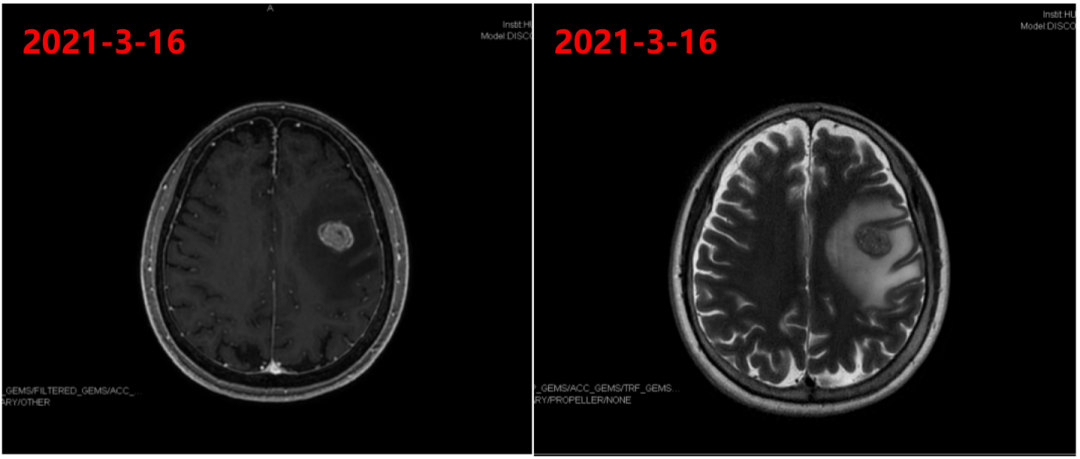
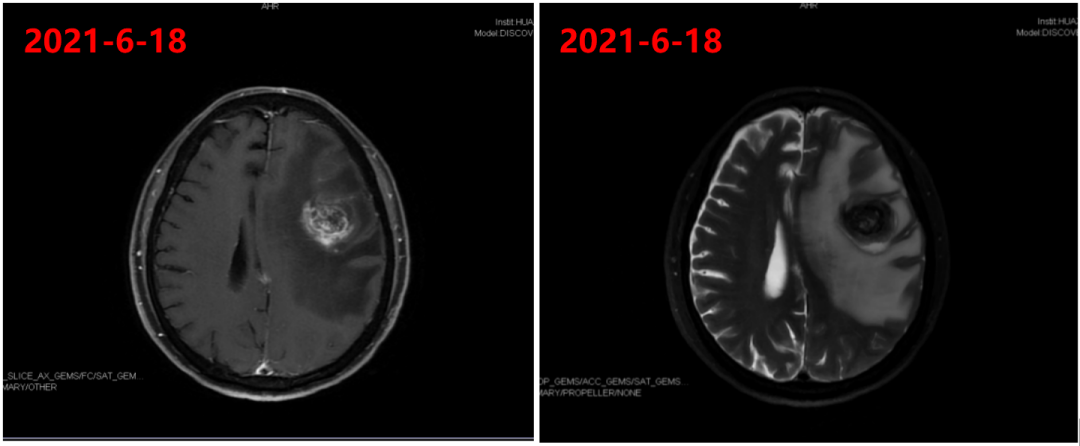
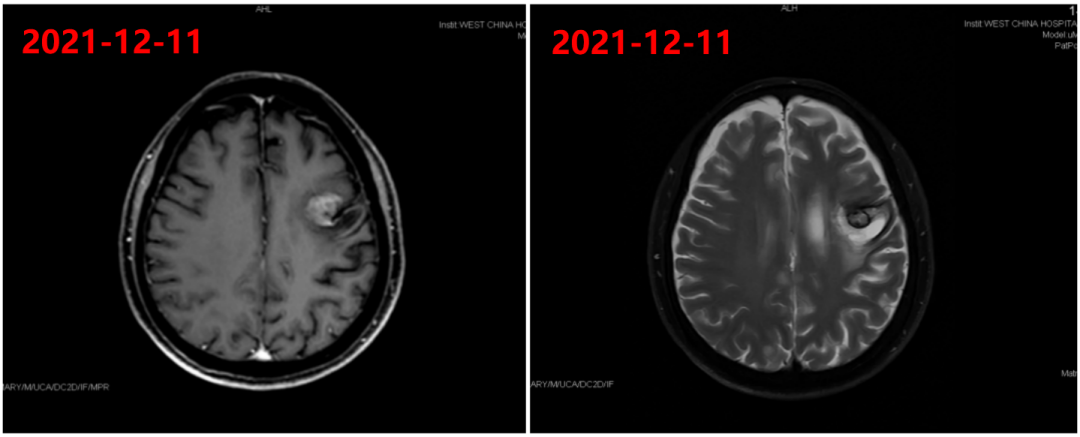

Figure 1. Saverininib treatment results before and after the cranioceree MRI examination results (intracranial metastases)
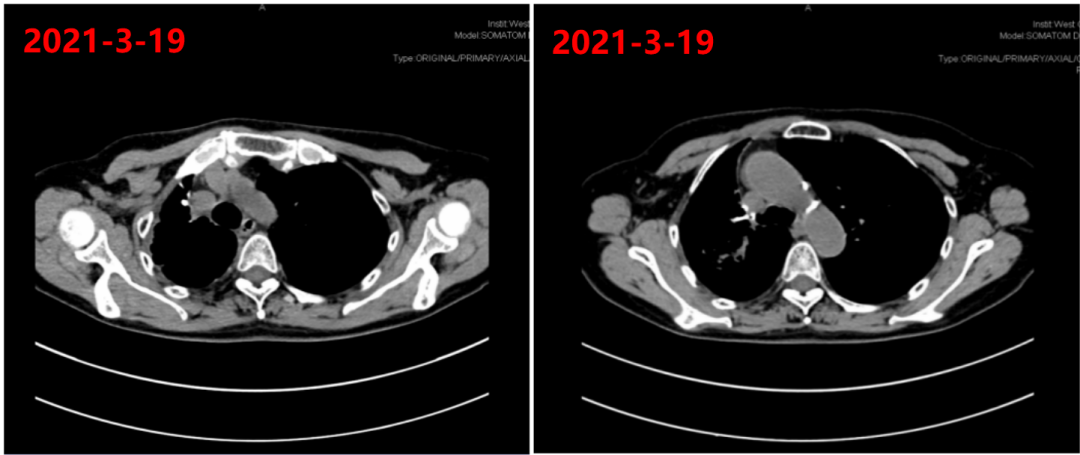
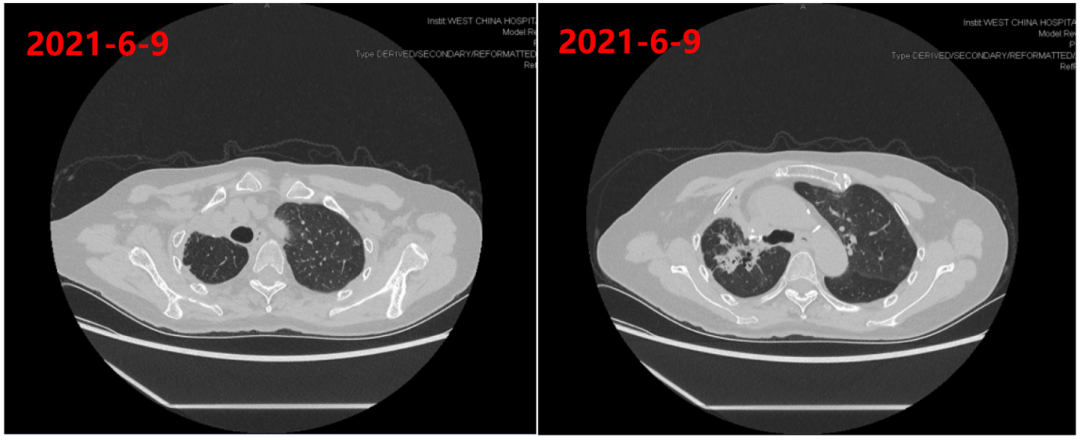
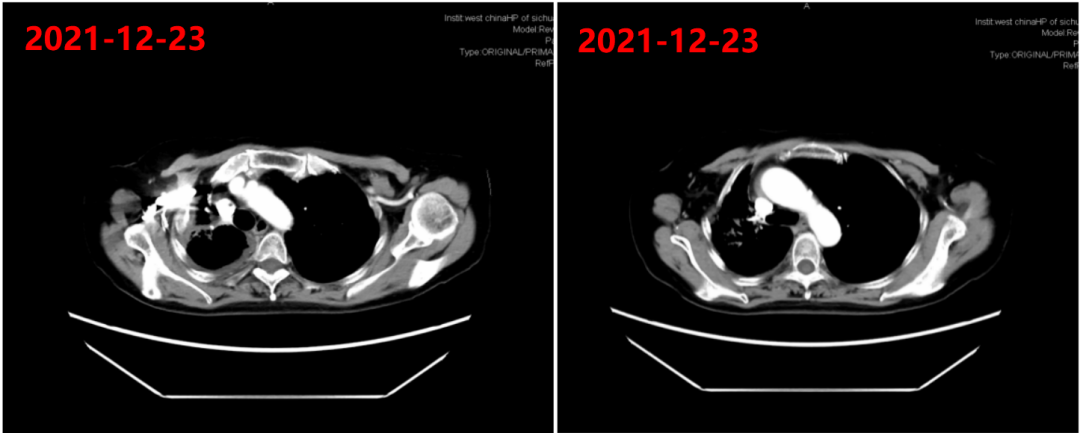
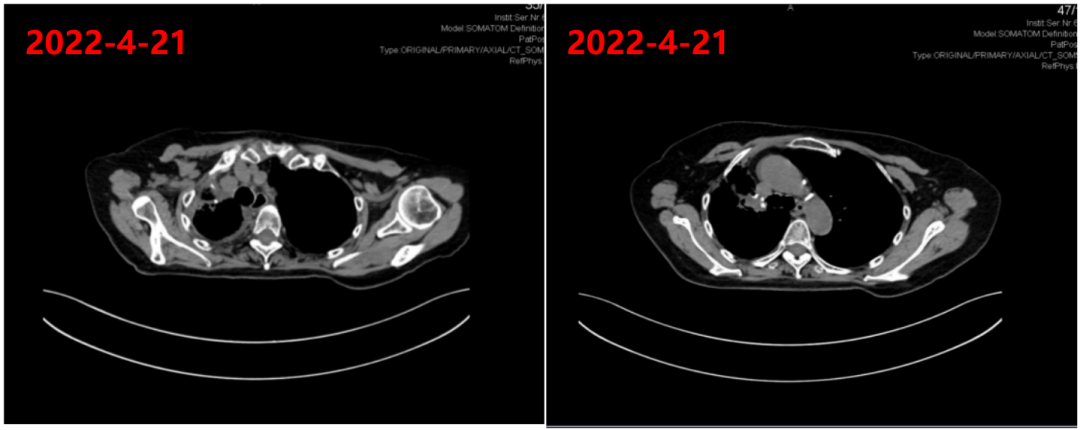
Figure 2. The results of CT examination before and after the treatment of Savidi
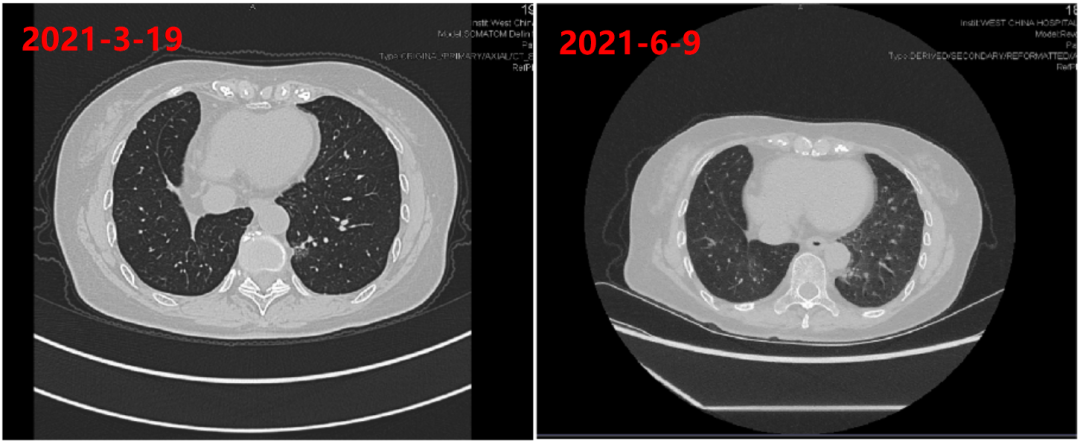
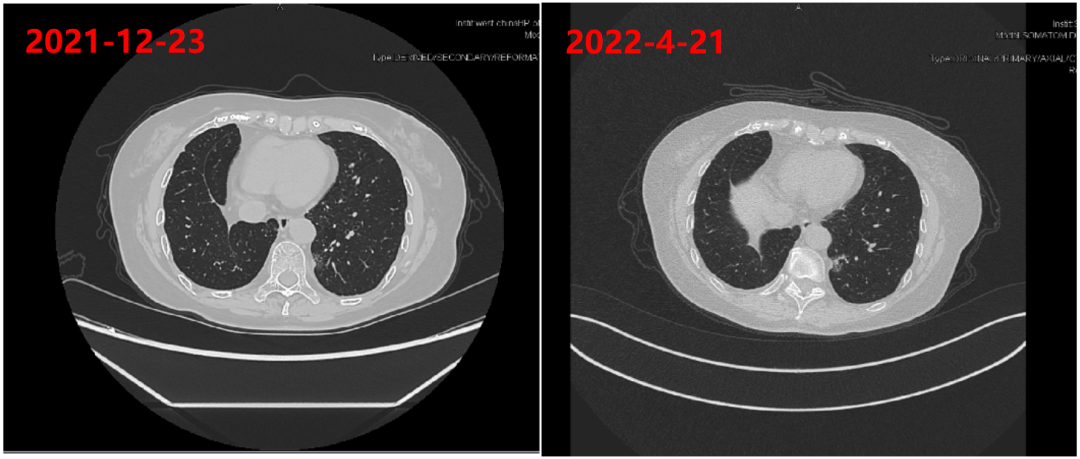
Figure 3. The results of CT examination results of the lower left lung GGO before and after the treatment of Savidi
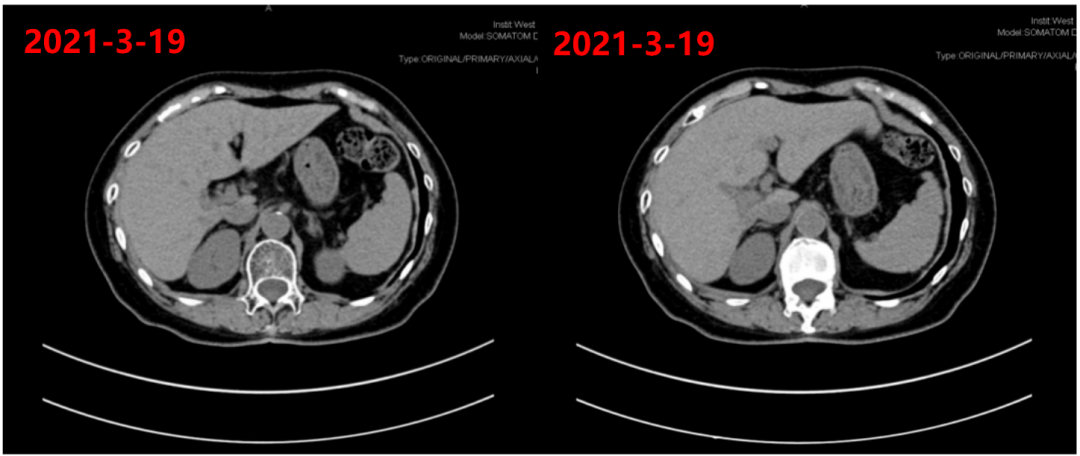


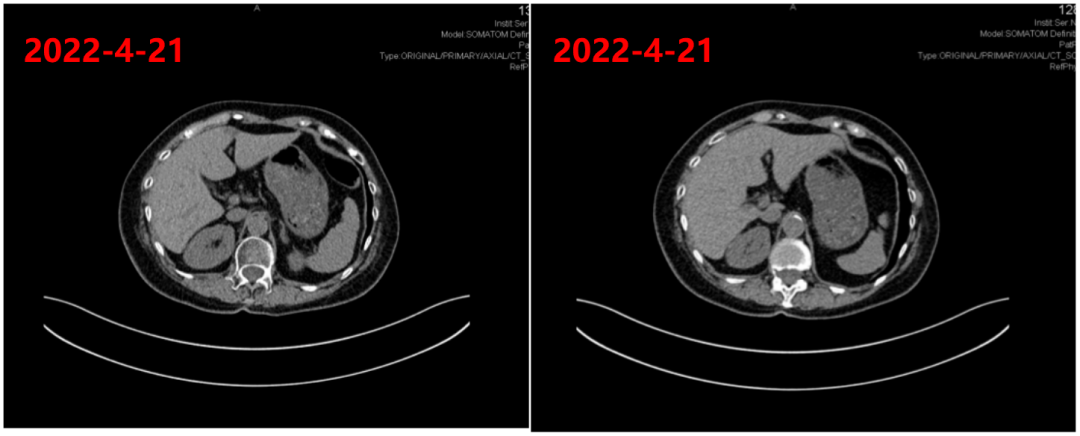
Figure 4. CT examination results (adrenal metastases)
The patient was diagnosed with upper lobe glandular cancer (CT2BN0M0 ⅡA), and the lung GGO of the lower lobe inner lobe, and GGO in the back of the right lobe. The patient received surgical treatment of "VATS right lung cutting+wall pleural resection+pleural adhesion+lymph node scan" surgery. The postoperative diagnosis is the right lobe sarcoma -like cancer (PT4N0M0 IIIA stage), which is an outer14 jumping and mutation mutation.
Patients received a 4 -cycle TP scheme auxiliary chemotherapy and postoperative adjuvant radiotherapy, but the right adrenal metastases soon occurred. The patient received the right adrenal metastatic stove therapy, and orally orally of the cordohbinnibal targeting therapy. After 4 months, the review showed that the right adrenal metastases were reduced. After 8 months of treatment of Kizotinib, the patient had dizziness and headache. The craniocerebral MRI showed that the patient's left leaves were accompanied by surrounding edema, and metastases were considered. Considering tumor drug resistance, climidinib therapy, coupled with the patient's previous genetic test results show that there is a jumping mutation of MET14 outside MET14, so subsequent selection of oral Savitinini targeting therapy. After 9 months of treatment, the craniocerebral MRI showed that the patient's brain metastases were narrowed before. As of now, patients have continued to use Savininib for 15 months.
Provide experts
Professor Gao Yuan: Patients with lung toss -like cancer -like carcinogenic metastasis with jumping and mutation of MET14, Saverninib achieved precise treatment
This case is a 74 -year -old female patient. She is diagnosed with upper lobe adenocarcinoma (CT2BN0M0 IIA). The postoperative diagnosis of right lobe sarcoma -like carcinoma (PT4N0M0 IIIA stage PT4N0M0 IIIA stage To. It received adjuvant radiotherapy and auxiliary chemotherapy after surgery, but the curative effect was not good. In just 4 months, adrenal metastases occurred. Subsequently, the patient was treated with oral cipotinib, and the adrenal metastases were reduced, but brain metastases soon occurred. Considering that patients may have tumor resistance, climininib is discontinued, and patients with high -selective MET inhibitors are treated for patients. After 9 months of medication, the efficacy was reviewed, and the patient's brain metastases were reduced. As of now, patients have received 15 months of PFS. Studies have shown that driving genes play an extremely important role in the continuous growth, infiltration and metastasis of lung malignant tumor cells, and the loss of carcinogenic genes can cause cancer cell apoptosis, that is, cancer cells have high sensitivity to inhibitors of driving genes sex. The discovery of the drive gene provides a strong theoretical basis for the molecular targeted therapy of the tumor [1].
MET is considered to be another important non-small cell lung cancer (NSCLC) molecular treatment target after EGFR and ALK. Met14 outer appende jump mutations account for 3%-4%in NSCLC, high in lung sarcoma-like cancer The ratio of 4.9%-31.8%; the incidence of jumping mutations in MET14 among the elderly NSCLC patients is higher than that of young patients; Independent tumor -driven gene [2].
In the past, research found that the disease of patients with NSCLC in MET14 is more likely to recur with diseases, and the survival status is unsatisfactory. It is urgent to effectively control the treatment of the disease and extend the survival of the treatment drugs. However, chemotherapy is only 6.7 months for the median total survival (OS) of patients with jumping mutations in MET14, and the tumor relief ability is limited [3]. With the approval of Savacinib, Met14 outer appende jumping mutations NSCLC Chinese patients finally ushered in targeted drugs.
Study [4.5] shows that the efficacy of Savacinib can be evaluated in the tumor relief, and the objective relief rate (ORR) reaches 49.2%; regardless of the pathological type, the number of previous treatment lines, whether there is brain metastases, the average Savidi is average. It shows good tumor relief and disease control, and the overall safety is better.
In the above cases, the patient is an elderly and brain metastase patient, but after the targeted treatment of the Savininib 600mg QD, the brain metastases have been significantly retreated. At present, the disease has also been well controlled. The exact effect of the out -of -the -ware jumping of the brain metastases.
Expert Reviews
Professor Li Yan: Savidinib is exactly effective, and Ciziinib develops sequentials to achieve significant benefits
This patient is a lung sarcoma -like cancer. Lungosoma -like cancer is a rare type of NSCLC. Early patients were comprehensive treatment models based on surgery. Poor prognosis, poor prognosis, and the treatment needs of patients are far from met. Patients used auxiliary chemotherapy during postoperative adjuvant treatment, and soon metastasis occurred. This also indicates that such patients need to find more effective treatment plans.
Savidini Treatment MET14 outer outer sub -jump mutant lung sarcoma -like cancer or other NSCLC subtype phase II clinical studies show that in the tumor efficacy assessment set (TRES), the ORR treated by Savidi is 49.29%, and Disease Control rate (DCR) is 93.4%, the median PFS is 6.9 months, and the median OS is 12.5 months [4.5].
It is worth noting that in this study, the proportion of patients with lung sarcoma -like cancer is as high as 36%, and 21%of patients have brain metastases. The results of the Asian group showed that the ORR of patients with pulmonary tumorous cancer was 50.0%, the DCR was 90%, the median PFS was 5.5 months, and the median OS was 10.6 months; %, The median PFS is 7.0 months, and the mid -bit OS is 17.7 months [4,5]. The study reminds that Savinini has exact effects on patients with poor prognosis and patients with a poor prognosis and patients with brain metastases.
Prior to this, the domestic MET pathway has been in the dilemma of "useless" diagnosis and treatment. After the auxiliary chemotherapy progress, this patient adopted the ALK inhibitors clingzohbiniopopotic treatment, but the patient had brain metastases 8 months later. Considering that the patient may have tumor resistance, and the patient selected the second -line treatment of the MET inhibitors Savininib, the patient's lesion was better controlled, especially the brain metastases were narrowed from the front. This case suggests that patients with Cizyininib can still choose Saivarinib for targeted therapy.
With the advancement of molecular detection technology, doctors can choose more accurate and effective diagnosis and treatment solutions. It is expected that future genetic testing technology will continue to break through, and new target "patent medicines" are constantly protecting the precise treatment of lung cancer patients.
Comment expert introduction
Professor Li Yan

Doctor of Medicine, Deputy Chief Physician
Standing Committee Member of the Sichuan Anti -Cancer Association Tumor Immunotherapy Special Committee
Standing Committee Member of the Second Nasopharyngeal Cancer Special Committee of the Sichuan Anti -Cancer Association
Young members of the Sichuan Prevention Medicine Society of Prevention Medicine
The Youth Member of the Breast Diseases Committee of the Sichuan Medical Association hosted and participated in a number of national and provincial topics, and obtained two patents
Youth Teacher at Sichuan University in 2010
Visiting Scholar of Cleveland Medical Center in 2017
In 2020, the prediction value of "PET/CT after the tumor tumor tumor" was selected as the paper of the West China Magazine
Introduction to experts
Gao Yuan attending physician
Teacher Li Yan team of the Department of Cancer Center of West China Hospital

Member of the Sichuan Oncology Society Cell Gene Editing Committee
Member of the Chengdu Anti -Cancer Association Tumor Nutrition and Supporting Treatment Committee
Youth Member of the Chengdu Anti -Cancer Association Tumor Treatment Professional Committee
references:
[1] Zou Li Li, Ke Qi. Non-small cell lung cancer targeted genes and their test research progress [J]. Sichuan anatomy magazine, 2020,28 (3): 196-200.
[2] Zhou Yan, Yuyan. Met14 outer appendal jump mutation and non-small cell lung cancer [J]. International Oncology magazine, 2021,48 (6): 366-369.
[3]Gow CH, Hsieh MS, Wu SG, Shih JY. A comprehensive analysis of clinical outcomes in lung cancer patients harboring a MET exon 14 skipping mutation compared to other driver mutations in an East Asian population[J]. Lung Cancer,2017 , 103: 82-89.
[4]LuS, Fang J, Li X, et al. Once-daily savolitinib in Chinese patients with pulmonary sarcomatoid carcinomas and other non-small-cell lung cancers harbouring MET exon 14 skipping alterations: a multicentre, single-arm, open- Label, Phase 2 Study [J] .Thelancet respiratorymedicine, 2021,9 (10): 1154-1164.
[5]Lu S, Fang J, Li X, et al. 2MO Final OS results and subgroup analysis of savolitinib in patients with MET exon 14 skipping mutations (METex14+) NSCLC[J]. Annals of Oncology, 2022, 33(S2) : S27.
*This article is only used to provide scientific information to medical people, and does not represent the viewpoint of this platform


- END -
Dunhuang City vigorously promotes vaccination work for the elderly over 60 years of age

Recently, the national epidemic has continued to show a decline as a whole, but so...
[Hubei Public Security Centennial Action] Capture 21 people involved in the case involved in the case to detect the "health product" fraud cases for the online sales of "health products"
The Summer Public Security Bureau of Xianao City, Hubei Province, reported on the ...